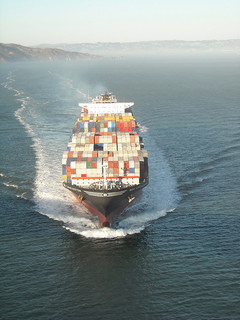Installing Docker
- Objectives
- Installing Docker
- Installing Docker on Linux
- Docker Inc. packages vs distribution packages
- Installing Docker on macOS and Windows
- Docker for Mac and Docker for Windows
- Running Docker on macOS and Windows
- Important PSA about security
- Ubuntu Installation

Objectives
At the end of this lesson, you will know:
How to install Docker.
When to use
sudowhen running Docker commands.
Note: if you were provided with a training VM for a hands-on
tutorial, you can skip this chapter, since that VM already
has Docker installed, and Docker has already been setup to run
without sudo.
Installing Docker
There are many ways to install Docker.
We can arbitrarily distinguish:
Installing Docker on an existing Linux machine (physical or VM)
Installing Docker on macOS or Windows
Installing Docker on a fleet of cloud VMs
Installing Docker on Linux
The recommended method is to install the packages supplied by Docker Inc.:
The general method is:
add Docker Inc.'s package repositories to your system configuration
install the Docker Engine
Detailed installation instructions (distro by distro) are available on:
You can also install from binaries (if your distro is not supported):
https://docs.docker.com/engine/installation/linux/docker-ce/binaries/
Docker Inc. packages vs distribution packages
Docker Inc. releases new versions monthly (edge) and quarterly (stable)
Releases are immediately available on Docker Inc.'s package repositories
Linux distros don't always update to the latest Docker version
(Sometimes, updating would break their guidelines for major/minor upgrades)
Sometimes, some distros have carried packages with custom patches
Sometimes, these patches added critical security bugs ☹
Installing through Docker Inc.'s repositories is a bit of extra work …
… but it is generally worth it!
Installing Docker on macOS and Windows
On macOS, the recommended method is to use Docker for Mac:
On Windows 10 Pro, Enterprise, and Education, you can use Docker for Windows:
On older versions of Windows, you can use the Docker Toolbox:
On Windows Server 2016, you can also install the native engine:
Docker for Mac and Docker for Windows
Special Docker Editions that integrate well with their respective host OS
Provide user-friendly GUI to edit Docker configuration and settings
Leverage the host OS virtualization subsystem (e.g. the Hypervisor API on macOS)
Installed like normal user applications on the host
Under the hood, they both run a tiny VM (transparent to our daily use)
Access network resources like normal applications
(and therefore, play better with enterprise VPNs and firewalls)Support filesystem sharing through volumes (we'll talk about this later)
They only support running one Docker VM at a time ...
... but we can usedocker-machine, the Docker Toolbox, VirtualBox, etc. to get a cluster.
Running Docker on macOS and Windows
When you execute docker version from the terminal:
- the CLI connects to the Docker Engine over a standard socket,
- the Docker Engine is, in fact, running in a VM,
- ... but the CLI doesn't know or care about that,
- the CLI sends a request using the REST API,
- the Docker Engine in the VM processes the request,
- the CLI gets the response and displays it to you.
All communication with the Docker Engine happens over the API.
This will also allow to use remote Engines exactly as if they were local.
Important PSA about security
If you have access to the Docker control socket, you can take over the machine
(Because you can run containers that will access the machine's resources)
Therefore, on Linux machines, the
dockeruser is equivalent torootYou should restrict access to it like you would protect
rootBy default, the Docker control socket belongs to the
dockergroupYou can add trusted users to the
dockergroupOtherwise, you will have to prefix every
dockercommand withsudo, e.g.:sudo docker version
Ubuntu Installation
#!/bin/bash
echo "Please install sudo in root session"
echo "and add the user in the sudo group"
echo "apt -y install sudo ; gpasswd -a userlab sudo"
sudo apt-get update
sudo apt-get -y install \
apt-transport-https \
ca-certificates \
curl \
gnupg-agent \
software-properties-common
curl -fsSL https://download.docker.com/linux/ubuntu/gpg | sudo apt-key add -
sudo add-apt-repository \
"deb [arch=amd64] https://download.docker.com/linux/ubuntu \
$(lsb_release -cs) \
stable"
sudo apt-get update
sudo apt-get -y install \
docker-ce \
docker-ce-cli \
containerd.io
sudo usermod -aG docker $USER